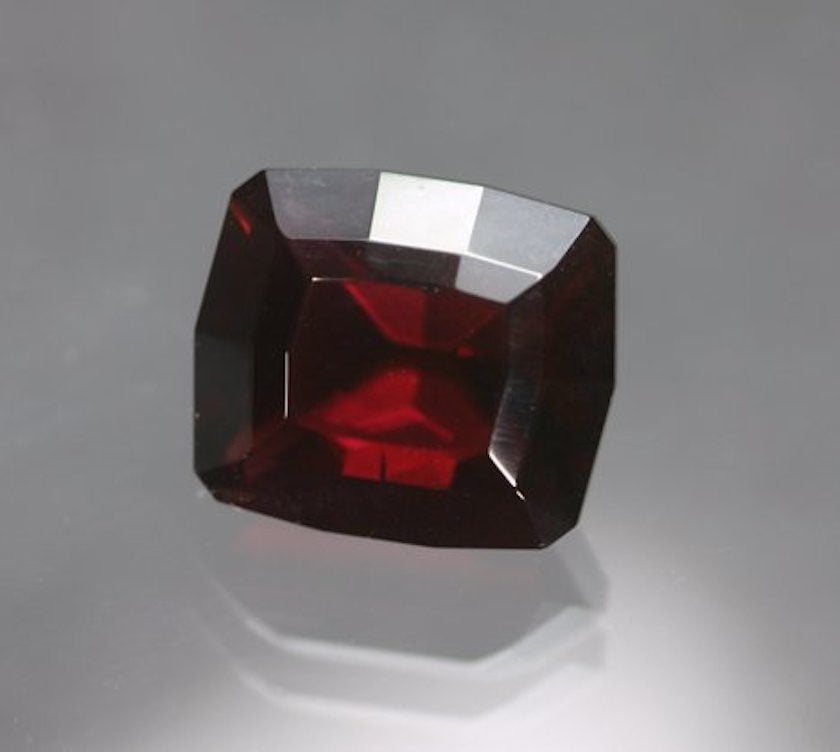Villiaumite Value, Price, and Jewelry Information
A little-known and rare collector’s gemstone, villiaumite is very difficult to facet. Its toxicity also makes it inadvisable to handle or wear.
3 Minute Read
A little-known and rare collector’s gemstone, villiaumite is very difficult to facet. Its toxicity also makes it inadvisable to handle or wear.
Start an IGS Membership today
for full access to our price guide (updated monthly).Villiaumite Value
Does Villiaumite Make a Good Jewelry Stone?
Villiaumites present several major problems for jewelry use. With a hardness of just 2-2.5, these stones could be scratched easily. Their perfect cleavage makes them susceptible to breaking. They're also water soluble. These properties make them not only inadvisable to wear but also difficult to cut. Faceters have used special tricks to facet villiaumite, such as using alcohol as a cutting coolant instead of water.
Villiaumites are also heat sensitive. Stones heated to 300° C (572° F) become colorless. Jewelry torches can easily exceed that temperature.
You're more likely to find villiaumites in mineral collections, if at all, than jewelry collections. Although first described in 1908, villiaumite remains relatively unknown among collectors of rare gemstones because no facetable material was reported until 1976. This rough, from the Los Islands, Guinea, was cut into tiny gems with deep red color. Since then, other sources have produced larger, facetable villiaumites in more colors. However, they remain very rare. Faceted villiaumites would appeal most to collectors of unusual gems or aficionados of the art of gem cutting.
Is Villiaumite Hazardous?
Villiaumite, as sodium fluoride, also poses a significantly more serious problem to faceters, gem and mineral collectors, and jewelry enthusiasts: it's toxic. Villiaumite's water solubility makes it especially dangerous, since aqueous solutions of sodium fluoride are readily absorbed by the human body. Accidentally inhaling or ingesting villiaumite particles can cause serious health problems or even death. Contact with this mineral can also cause skin, eye, and respiratory irritation. Wash your hands after handling any mineral specimen or finished gem.
Jewelry use is not recommended.
Consult the Material Safety Data Sheet (MSDS) for sodium fluoride for more information on villiaumite's hazards and safety recommendations, including storage recommendations.
The IGS doesn't recommend cutting this material. For an illuminating discussion specifically on faceting villiaumites, see this thread from the GemologyOnline.com forum. For information on general lapidary safety, consult our articles on safety tips and toxic gems.
Identifying Villiaumites
Villiaumite's toxicity and sensitivities may make some standard gemological tests risky. For example, in 2020, Kenneth Scarratt of the ICA GemLab examined an orange, rectangular step-cut villiaumite. Opting not to conduct a refractometer reading, which would involve putting the stone in contact with fluids, he instead used the Duc de Chaulnes' method. This technique measures the refractive index (RI) by dividing the real depth of the gem, from table to keel in mm, by the apparent depth, measured using a microscope fitted with a mm scale.
Measuring the RI of the specimen is a useful test. As Scarratt also notes, villiaumite's RI measures significantly lower than those of other gemstones and even below that of water.
Although villiaumites are singly refractive, some specimens may show anomalous double refraction (ADR) and even strong anomalous pleochroic colors. An examination with a dichroscope or polariscope can confirm ADR.
Are There Synthetic Villiaumites?
Scientists have synthesized villiaumites. This lab-created material is colorless. However, there's no known jewelry use for this material (and clearly little incentive for it).
Gemstone treatments for villiaumites are also very unlikely. However, a study has indicated that colorless villiaumite crystals in fluid inclusions in an unspecified host mineral turned brown when exposed to gamma radiation. As noted earlier, villiaumites can also turn colorless if exposed to temperatures over 300° C.
Where are Villiaumites Found?
The Los Islands, Guinea, the type locality for villiaumite, have produced facetable material, reddish crystals in nepheline syenite. Their RIs range somewhat higher than specimens from other sources, from 1.330 to 1.332.
The following sites have also produced facetable villiaumites:
- Francon Quarry, Mont-Saint Hilaire, Quebec, Canada.
- Aris, Khomas Region, Namibia.
- Kola Peninsula, Russia.
Other notable sources include the following:
- Minas Gerais, Brazil; Greenland; Colorado, New Mexico, United States.
How Large Can Villiaumites Get?
Guinea villiaumites might yield gemstones up to two carats. Despite their small size, they're desirable because so few stones exist. Canada, Namibia, and Russia have produced larger gemstones.
- Smithsonian Institution (Washington, DC): 1.21 (orange-red, Guinea).
- Private Collection: 12.1 (red, Quebec, cabochon?).
Joel E. Arem, Ph.D., FGA
Dr. Joel E. Arem has more than 60 years of experience in the world of gems and minerals. After obtaining his Ph.D. in Mineralogy from Harvard University, he has published numerous books that are still among the most widely used references and guidebooks on crystals, gems and minerals in the world.
Co-founder and President of numerous organizations, Dr. Arem has enjoyed a lifelong career in mineralogy and gemology. He has been a Smithsonian scientist and Curator, a consultant to many well-known companies and institutions, and a prolific author and speaker. Although his main activities have been as a gem cutter and dealer, his focus has always been education. joelarem.com
International Gem Society
Related Articles
Black Diamond Value, Price, and Jewelry Information
Chameleon Diamond Value, Price, and Jewelry Information
Gray Diamond Value, Price, and Jewelry Information
Green Diamond Value, Price, and Jewelry Information
Latest Articles
800 Years of Mogok: A Celebration in Tenuous Times
What is the Average Gemstone Faceting Yield?
Pyroxmangite Value, Price, and Jewelry Information
How to Identify Emerald Simulants and Synthetics
Never Stop Learning
When you join the IGS community, you get trusted diamond & gemstone information when you need it.
Get Gemology Insights
Get started with the International Gem Society’s free guide to gemstone identification. Join our weekly newsletter & get a free copy of the Gem ID Checklist!
